Picture a dollhouse – a colorful exterior, several stories high, gabled roof, highly decorative details, maybe even a tower – and you’ve just envisioned a Victorian style home. From their iconic exteriors, to their opulent interiors fit for a queen, Victorian houses are a unique home style that stands out from the rest.
Whether you’re looking to buy your first home or are fascinated by the popular house styles across the US, a Victorian home should be on your list of must-sees. Find out what makes this style unique and the history that has let these homes stand the test of time.
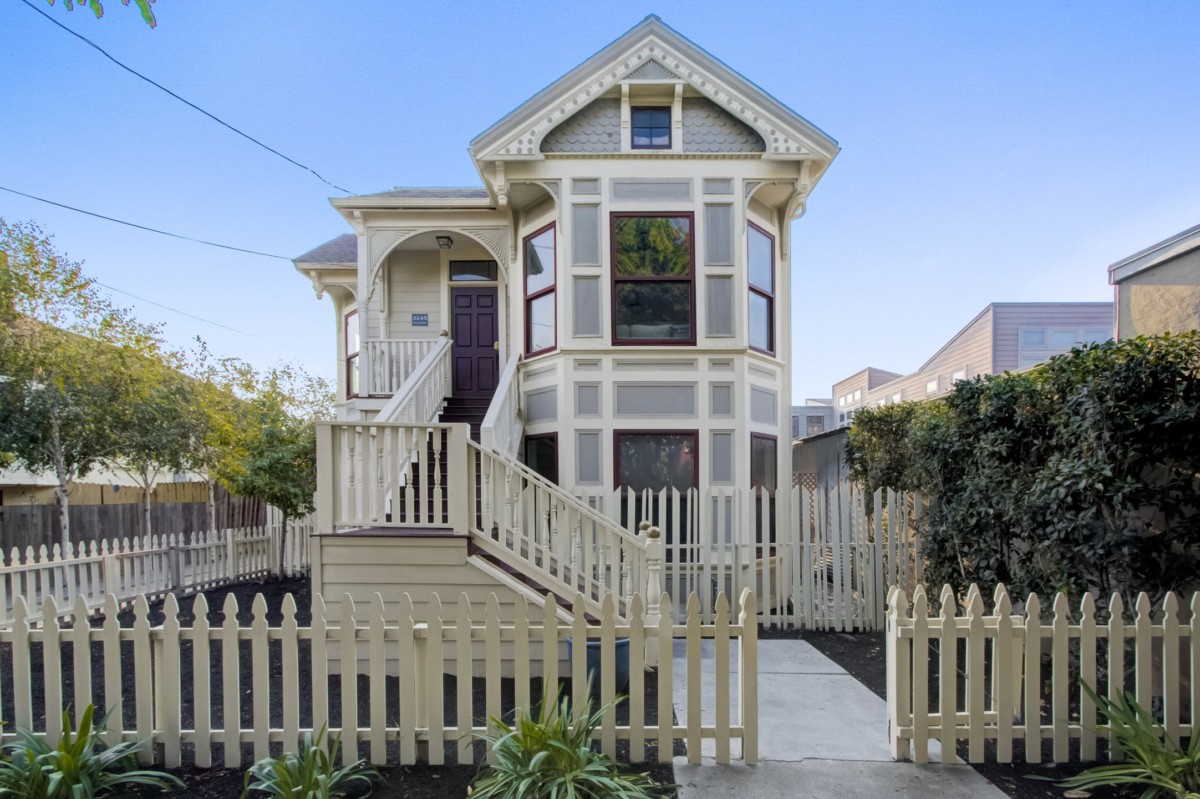
What is a Victorian style house?
Unlike other homes, Victorian style houses are not a singular style of home. Victorian often refers to the era of 1837-1901 and Queen Victoria’s reign over Great Britain and the British colonies. Victorian style homes take inspiration from a variety of different architectural movements, with each putting its own unique stamp on the typical Victorian era house.
History of the Victorian houses
Victorian houses became popular from 1837 to 1901, coinciding with the Industrial Revolution. As new building materials became widely available, builders were able to take a different approach to home design. Mass production aided home builders in adding architectural details like intricate metalwork and decorative woodwork throughout homes. While the Victorian home style originated in England, it quickly made its way to many other countries, including the US.
Where are Victorian houses located?
Victorian houses are found in many cities across the country. By far, the city with the most well-known Victorian style homes is San Francisco, CA. From Alamo Square’s “Painted Ladies,” to Pacific Heights and Bernal Heights, you can find Victorian homes in just about every neighborhood in San Francisco. Victorian homes are also popular in cities like Louisville, KY, New Orleans, LA, St. Louis, MO, Cape May, NJ, and Seattle, WA, but with a little luck, you can find these homes in nearly every major housing market in the US.
Victorian house characteristics
While Victorian houses have many different architectural styles, there are common features you can find among them. These interior and exterior features help tie Victorian era homes together, making them easily identifiable from other home styles.
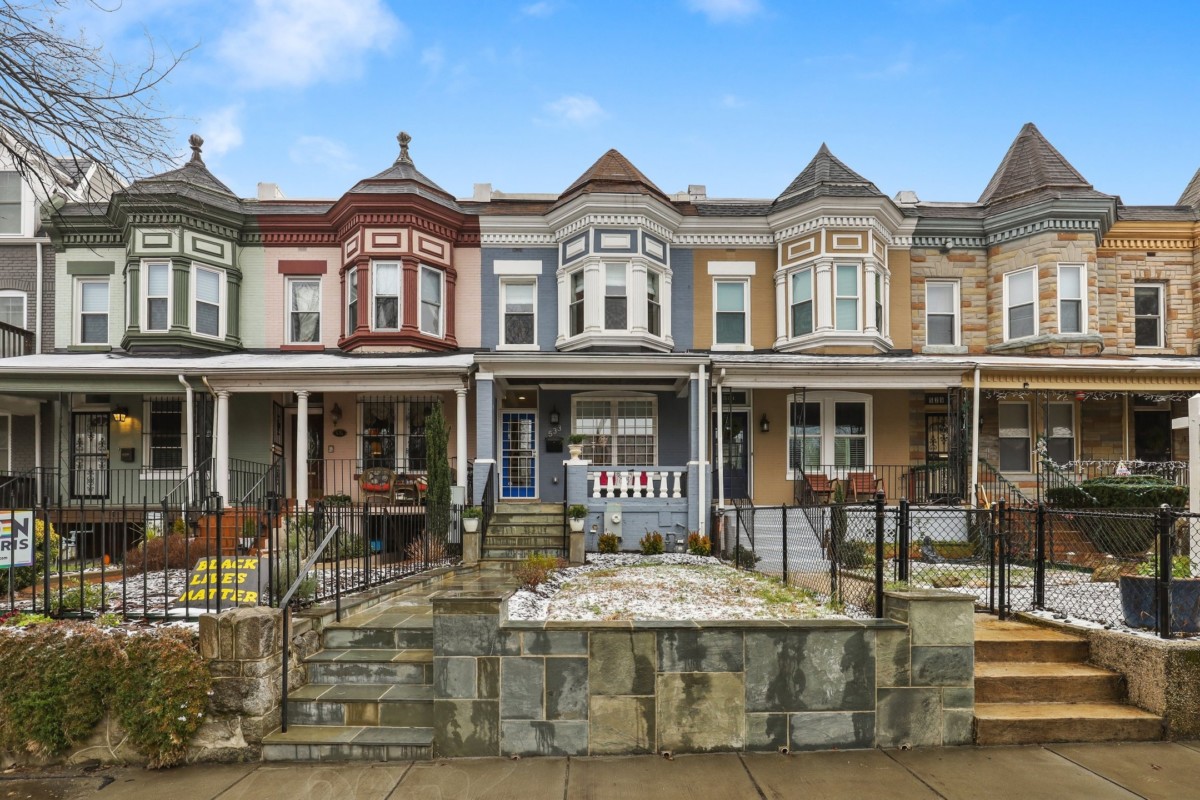
Victorian house exterior features
Brightly colored exteriors: A recognizable feature of most Victorian homes is the colored facade. Whether pastel-colored or painted brick, colorful exteriors became popular during the Victorian era with the increased availability of building materials like paint.
Bay windows: Victorian homes are known for their detailed windows, including bay windows. This window style extends beyond the front exterior of the home, usually in a rounded or angled shape, and features three windows next to each other.
Distinctive window features: Aside from bay windows, you can often find a variety of different window shapes and sizes in Victorian homes. These can include multi-paned, stained glass, arched, and round.
Intricate woodwork: Intricate woodworking designs can be seen in the trim work adorning Victorian homes. Detailed trim outlining windows, doors, eaves, and porches give Victorian style houses their charming, Gingerbread-house look.
Porches: Many Victorian house layouts include a porch, some of which may wrap around the side of the home. Some are highly decorative with wooden posts, rails, molding, and intricate trim.
Two to three stories: Victorian homes are typically two to three stories high as they were often built on narrow lots. Sometimes Victorian styles were built as row houses, meaning they shared walls with neighboring houses.
Steep, gabled roofs: Another common characteristic of Victorian style houses are their pitched, triangular roofs.
Towers, turrets, and dormers: As with other elements of Victorian era architecture, the addition of towers, turrets, and dormers was highly influenced by the Industrial Revolution. The added ease of homebuilding made it possible for builders and architects to experiment with asymmetrical and unique home features.
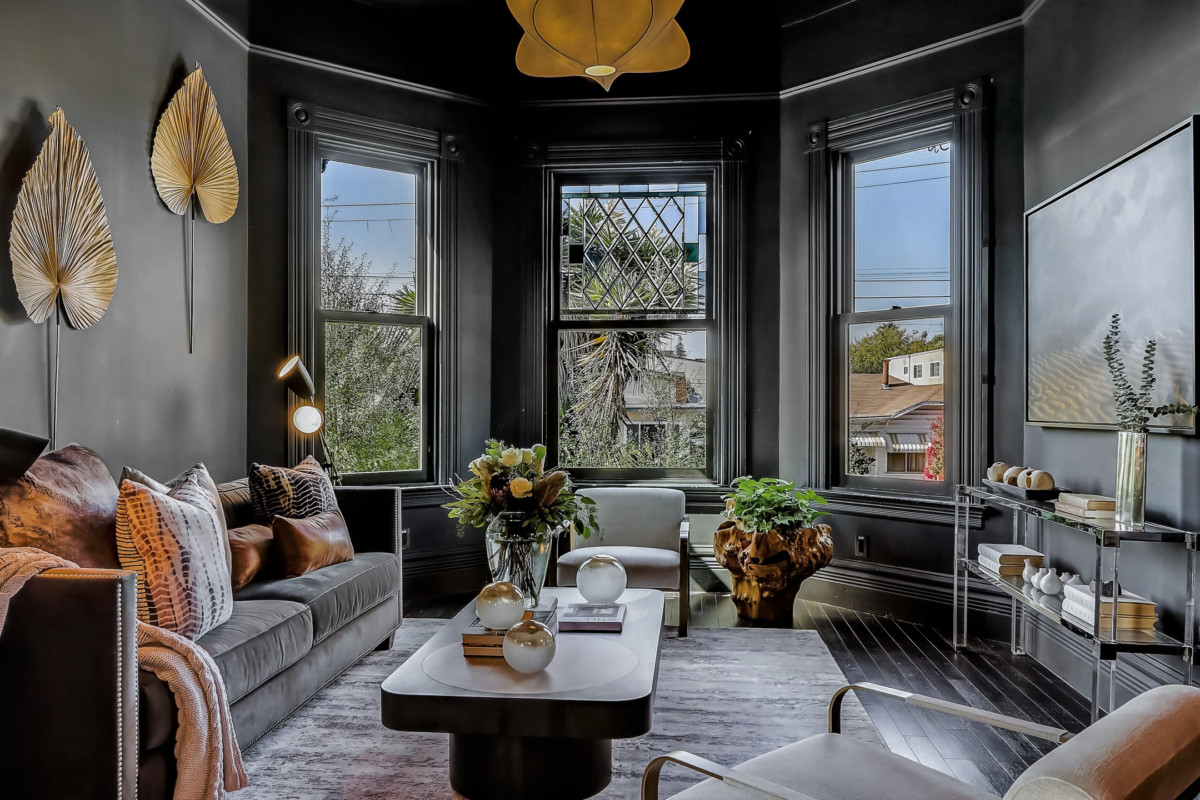
Victorian house interior features
As with the exterior, the interior of a Victorian house is equally as ornate and decorated. You’ll often find crown molding, window and door trim, and intricate staircases. Victorian homes are more formal, so there may be many “parlors” or living rooms, and typically feature a formal dining room. There may also be hidden nooks, balconies, and high ceilings, adding to the grandeur of a Victorian era home.
Types of Victorian architecture styles
Victorian homes have a staple look – ornate exteriors, reminiscent of a castle with large windows. Yet different architectural styles have influenced the look of Victorian homes, resulting in unique spins on the standard design. Let’s take a look at the most popular Victorian architecture styles.
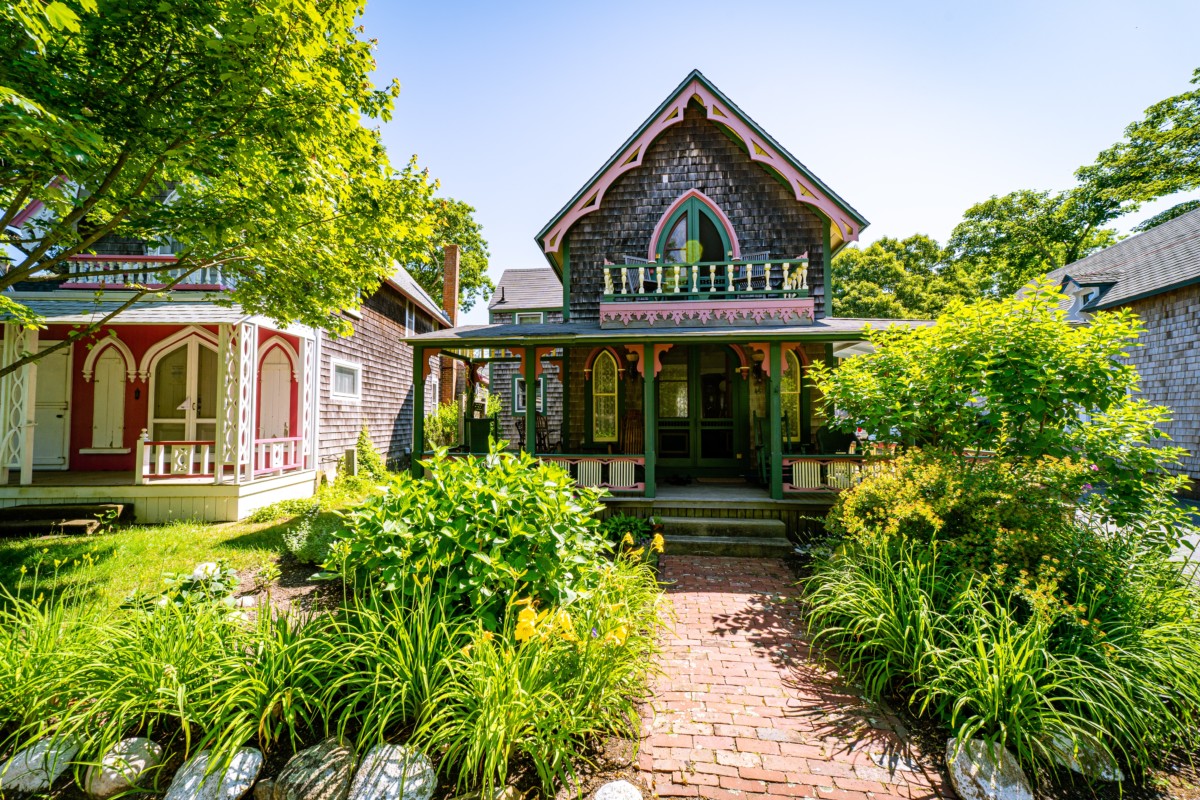
Gothic Revival Victorian house (1830-1860)
Gothic Revival style homes take inspiration from medieval European churches with their steeply pitched roofs and pointed arches. You can also find ornate woodworking details, turrets, and decorative columns or posts.
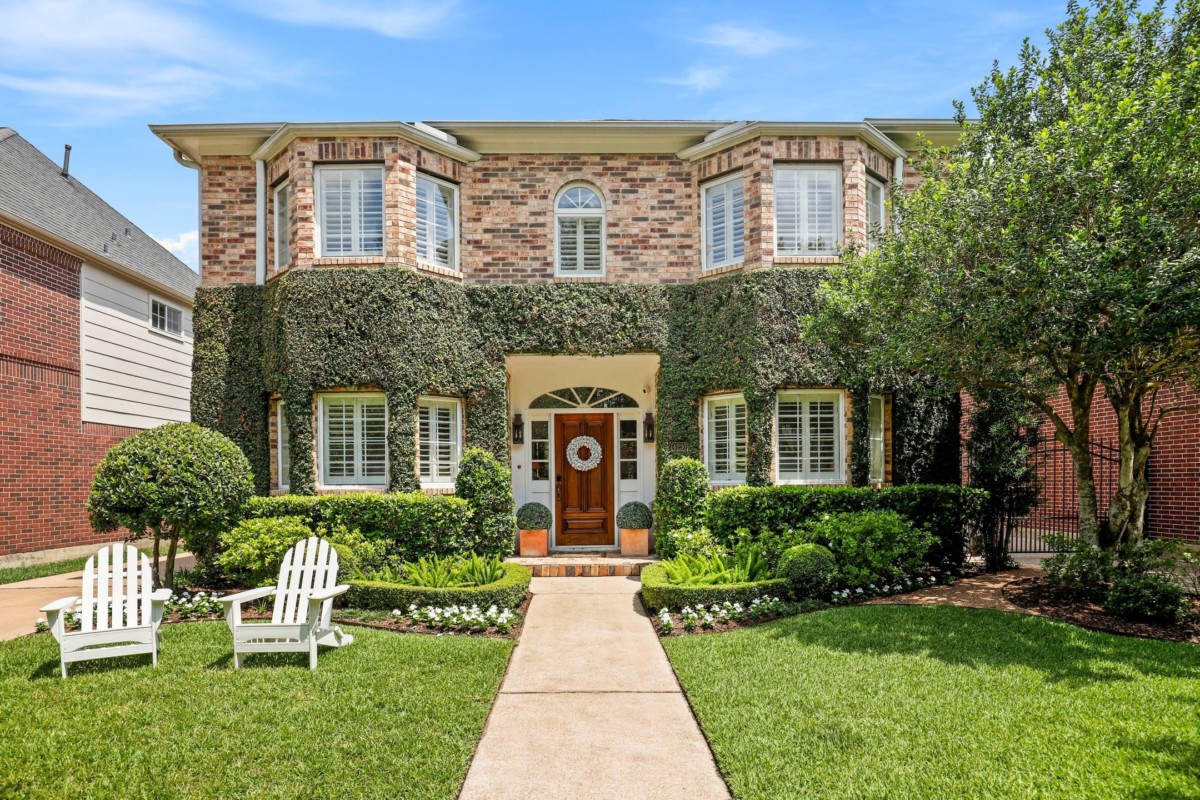
Italianate Victorian house (1840-1870)
Italianate style Victorian homes mirror the Italian villas they are modeled after. Typically only two stories, these homes also feature single-story porches, wide eaves, low roofs, and the characteristic ornamental brackets.
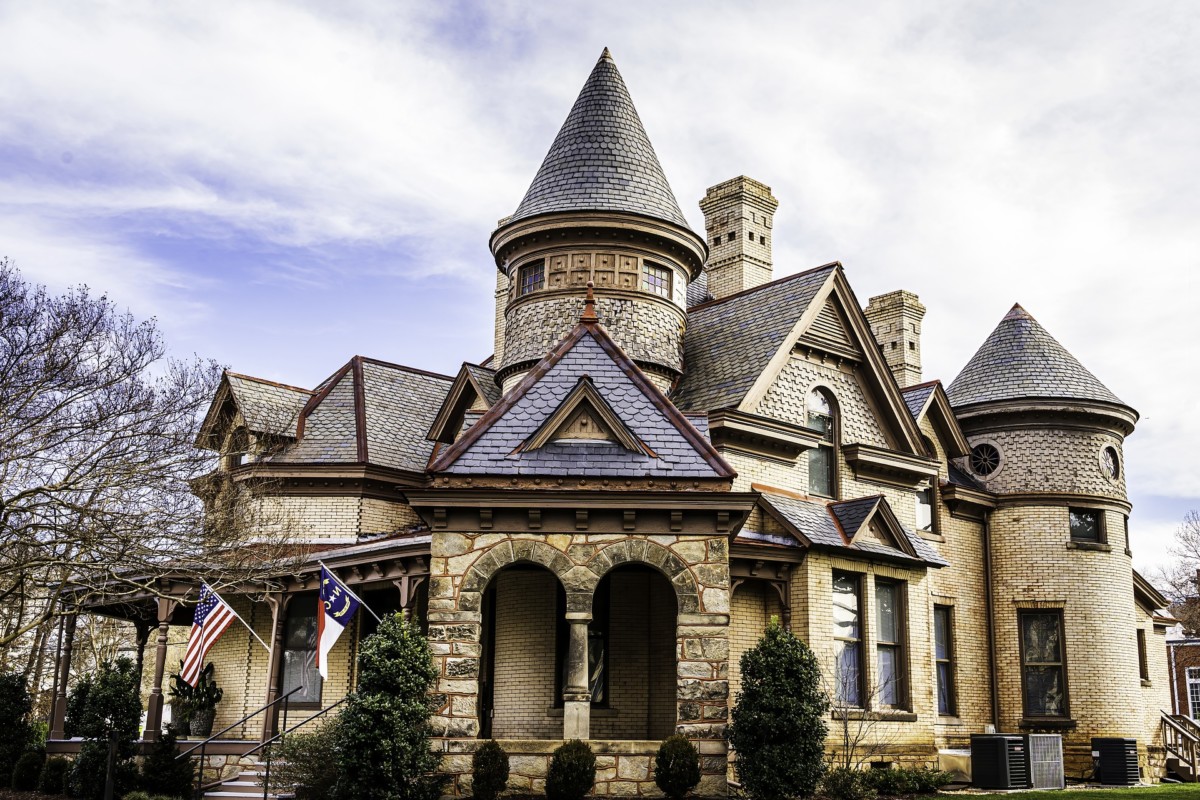
Romanesque Revival Victorian house (1840-1900)
Similar to Gothic Revival, Romanesque Revival Victorian homes take inspiration from European churches with their arches and turrets. Romanesque Revival style often features a brick exterior, intricate stone detailing, and a reddish color. Unlike many other types of Victorian architecture styles, Romanesque Revival homes don’t have that characteristic wood trim.
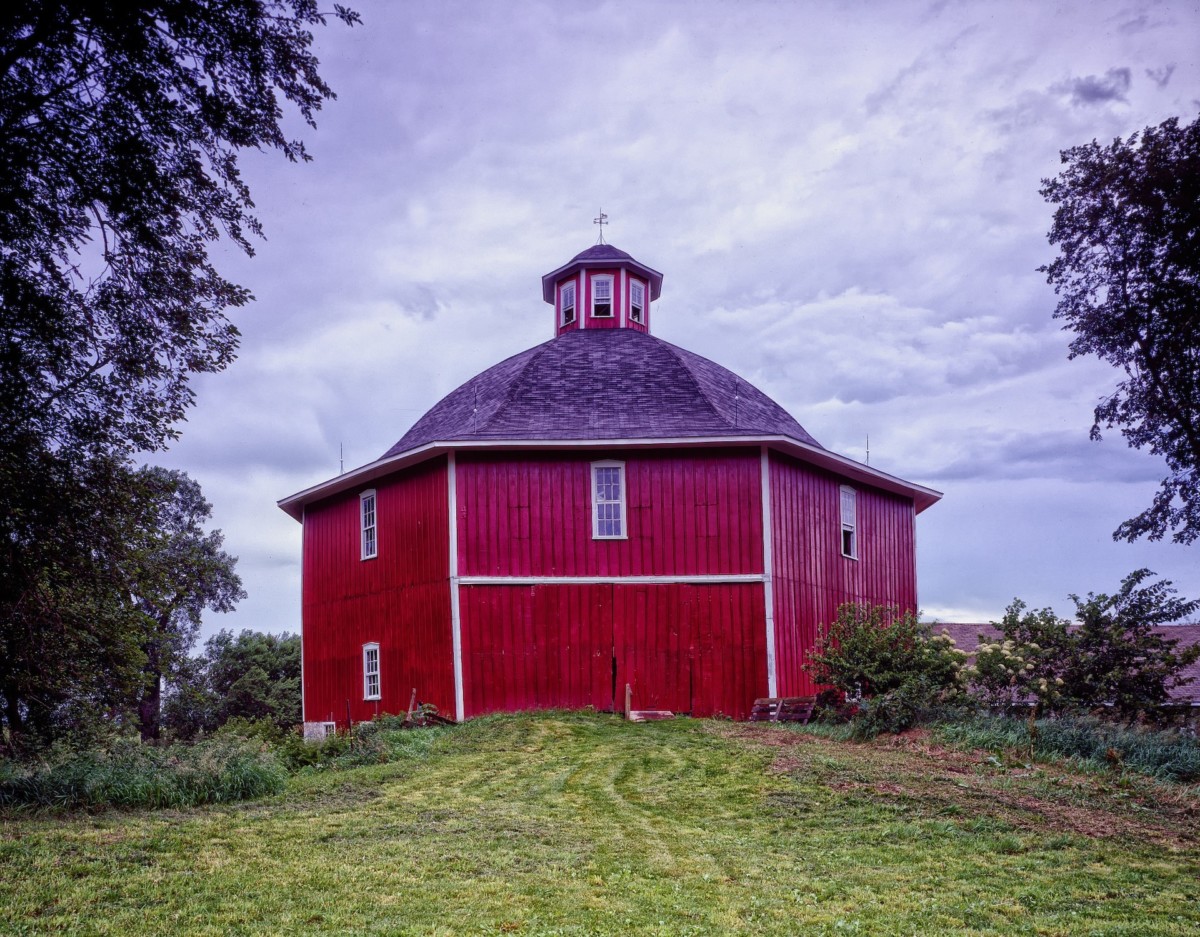
Octagon style Victorian house (1850-1870)
An eclectic take on the Victorian style home is the Octagon style. Appropriately named, the Octagon style home has eight sides, making homes feel airy and full of light. They often have low-pitched roofs, a domed shape, a cupola, and a spiral staircase in the middle of the home.
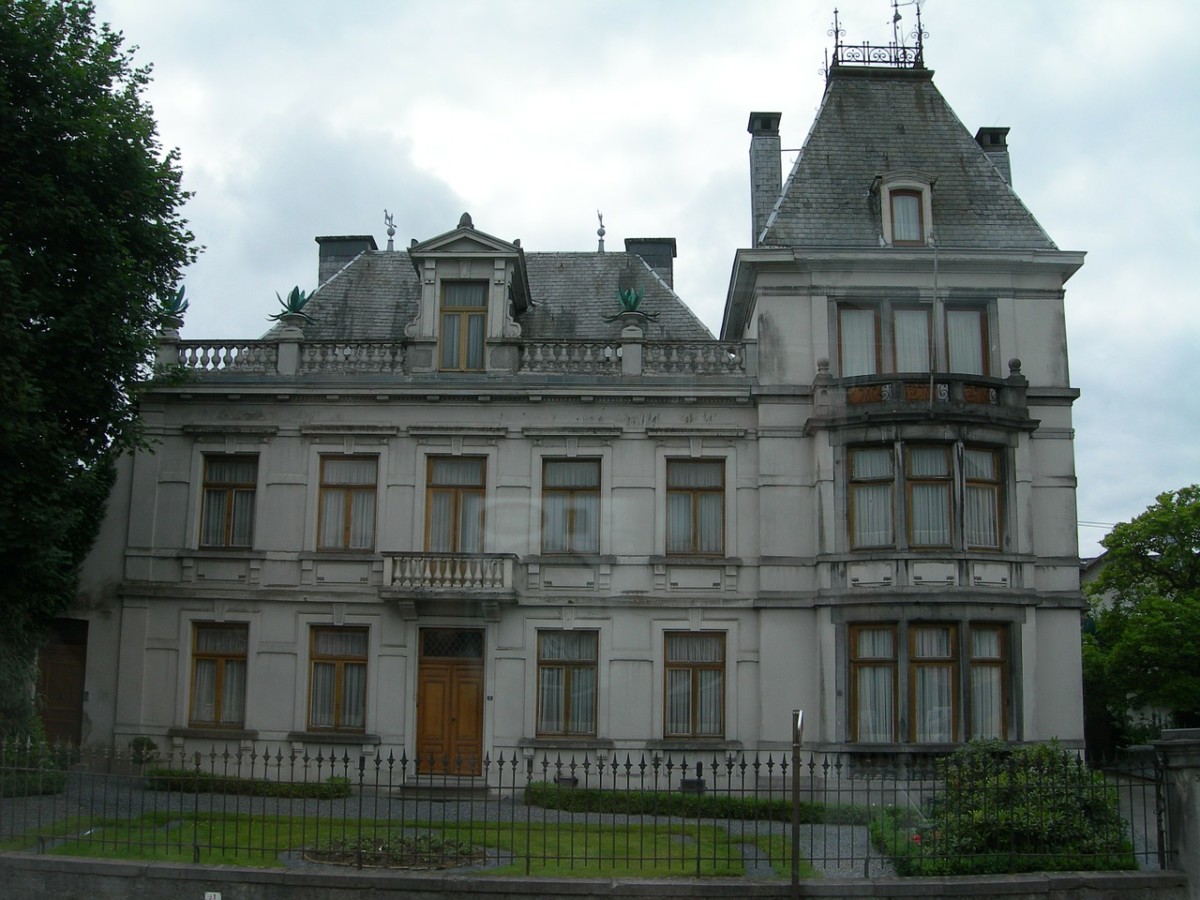
Second Empire Victorian house (1852-1870)
Originating in France, Second Empire Victorian homes are known for their Mansard roofs. Mansard roofs are a unique 4-sided gambrel roof, often featuring diamond-shaped dormer-style windows. Second Empire homes are also characterized by their square or rectangular base, attic space, and decorative millwork.
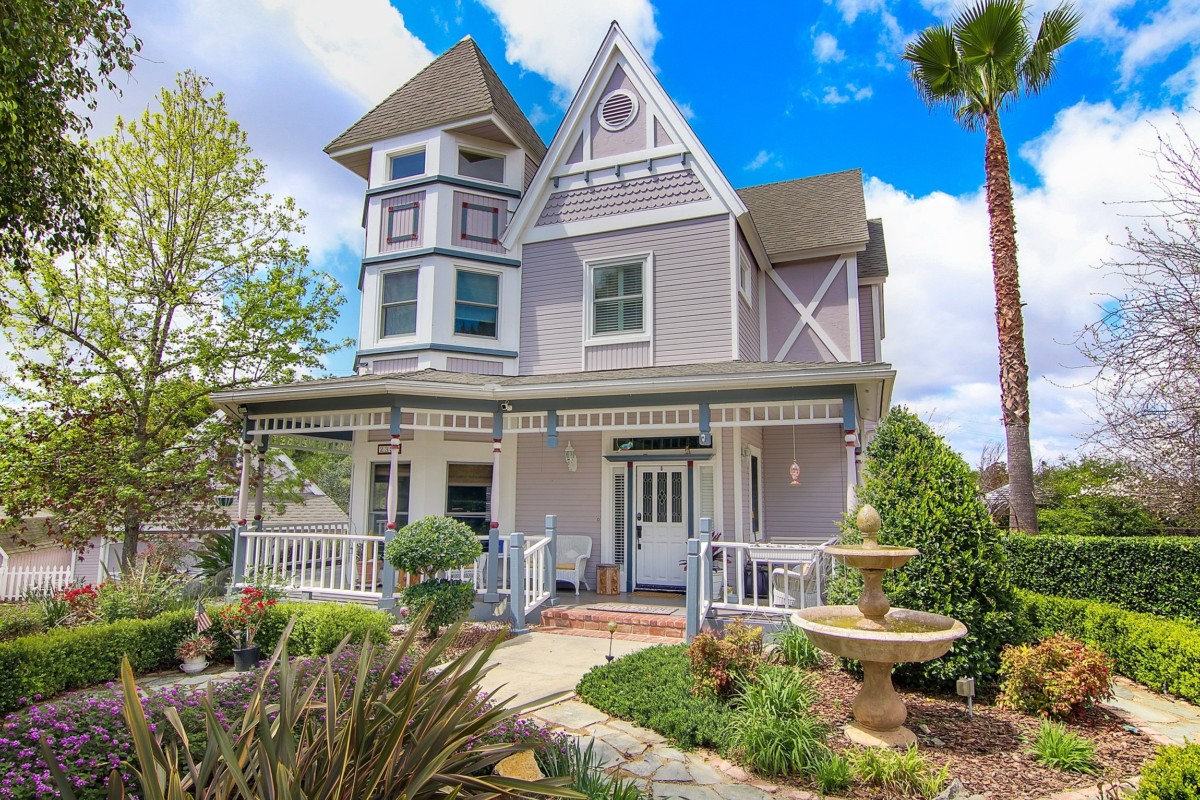
Stick-Eastlake Victorian house (1860-1890)
Stick-Eastlake homes, also just called Stick, share a resemblance to Tudor-style homes with their diagonal, horizontal, or vertical planks (called “stick work”) adorning the home’s exterior. Typically made with wood, Stick-Eastlake Victorian homes are also characterized by their pitched gable roofs, trusses, towers, and embellished trim. Unlike other Victorian style homes, Stick-Eastlake style may not have bay windows and as much intricate decoration.
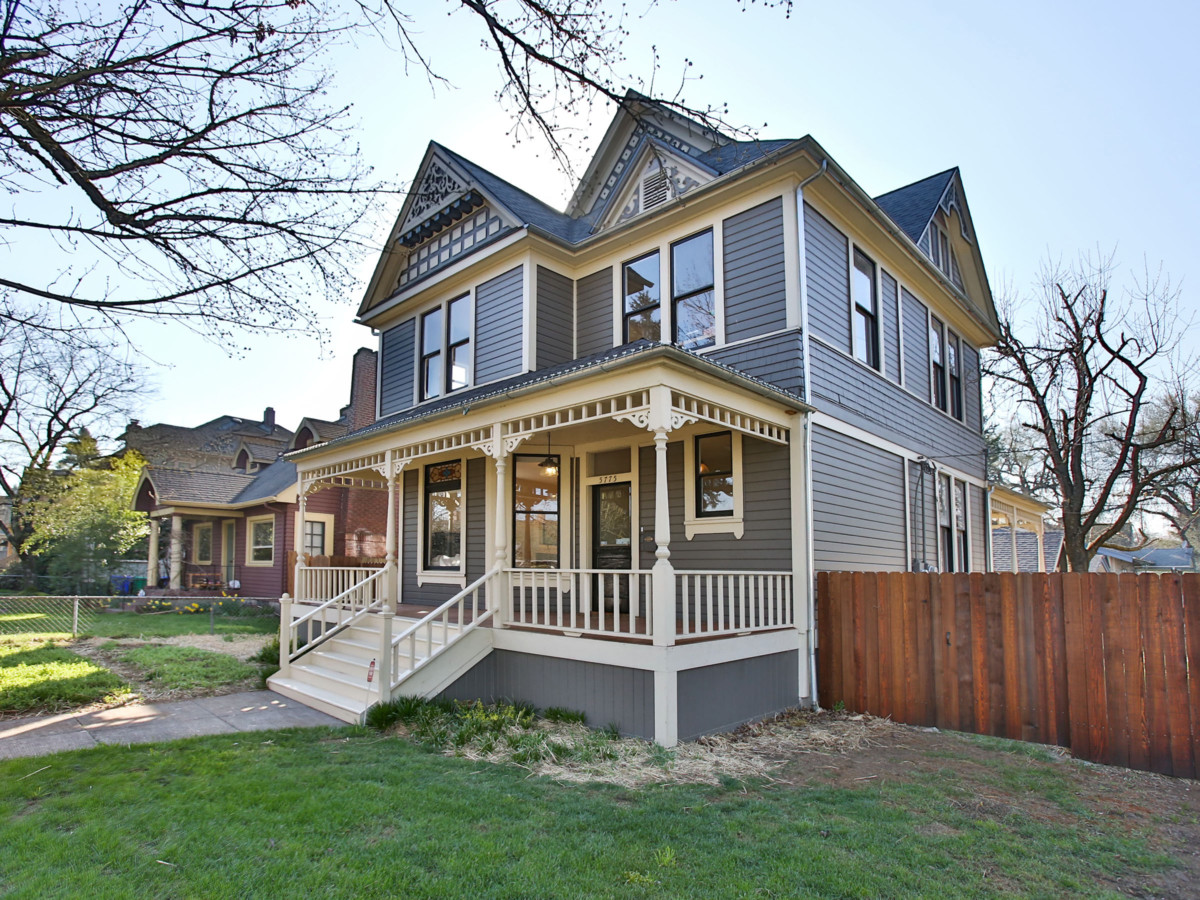
Folk Victorian house (1870-1910)
The most common type of Victorian style, the Folk Victorian house, is more simplistic in design. Characterized by their square look, classically detailed trims, gable roof, and front porch, Folk Victorian homes exude the spirit of the Victorian style without the grandeur.
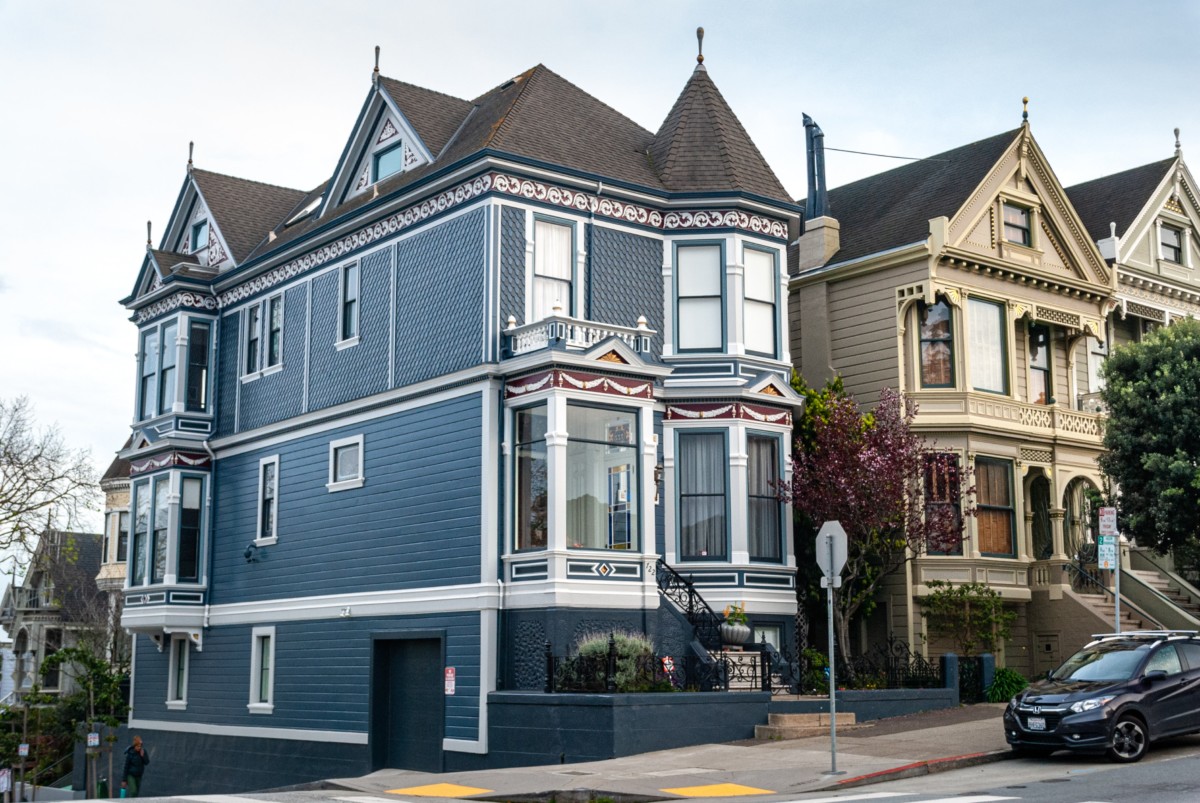
Queen Anne Victorian house (1875-1905)
Queen Anne Victorian homes are the most famous Victorian style architecture that comes to mind. Often more asymmetrical in design, Queen Anne style homes feature wrap-around porches, balconies, towers, bay windows, pitched roofs, highly ornate trim, and brightly painted exteriors.
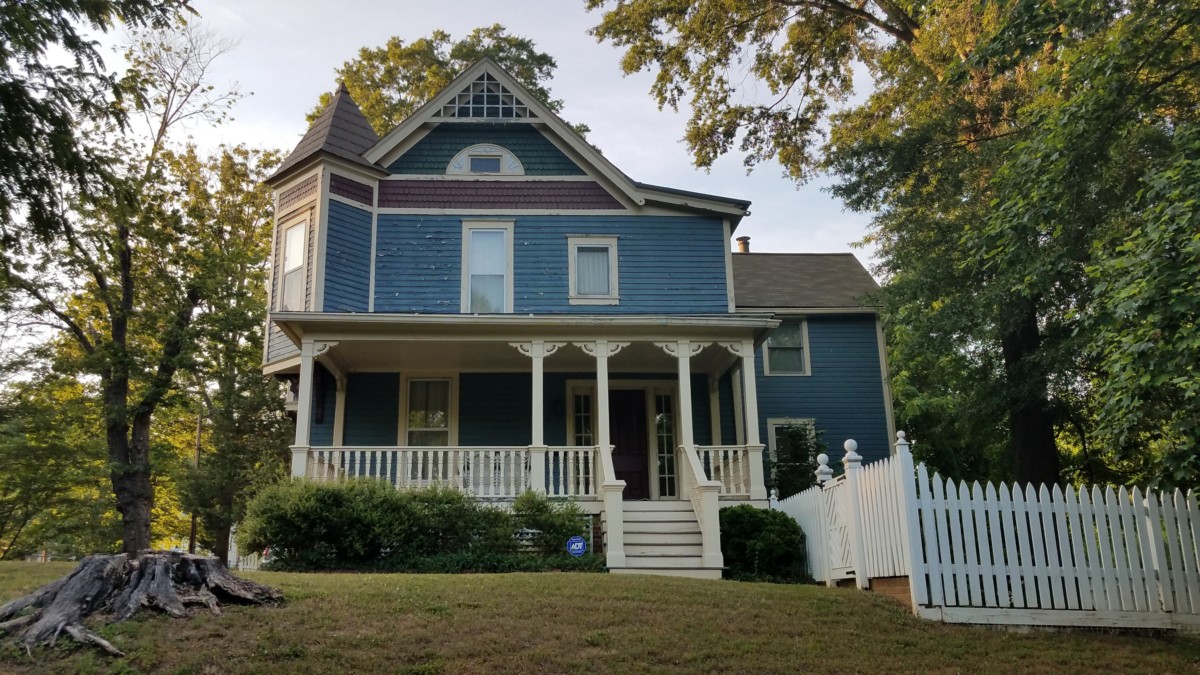
Shingle style Victorian house (1880-1900)
Rustic and simplistic in appearance, Shingle style Victorian homes often blend into their surroundings with their brick or clapboard facades. Popular in New England, Shingle style homes typically have round towers, sash windows, and large porches.
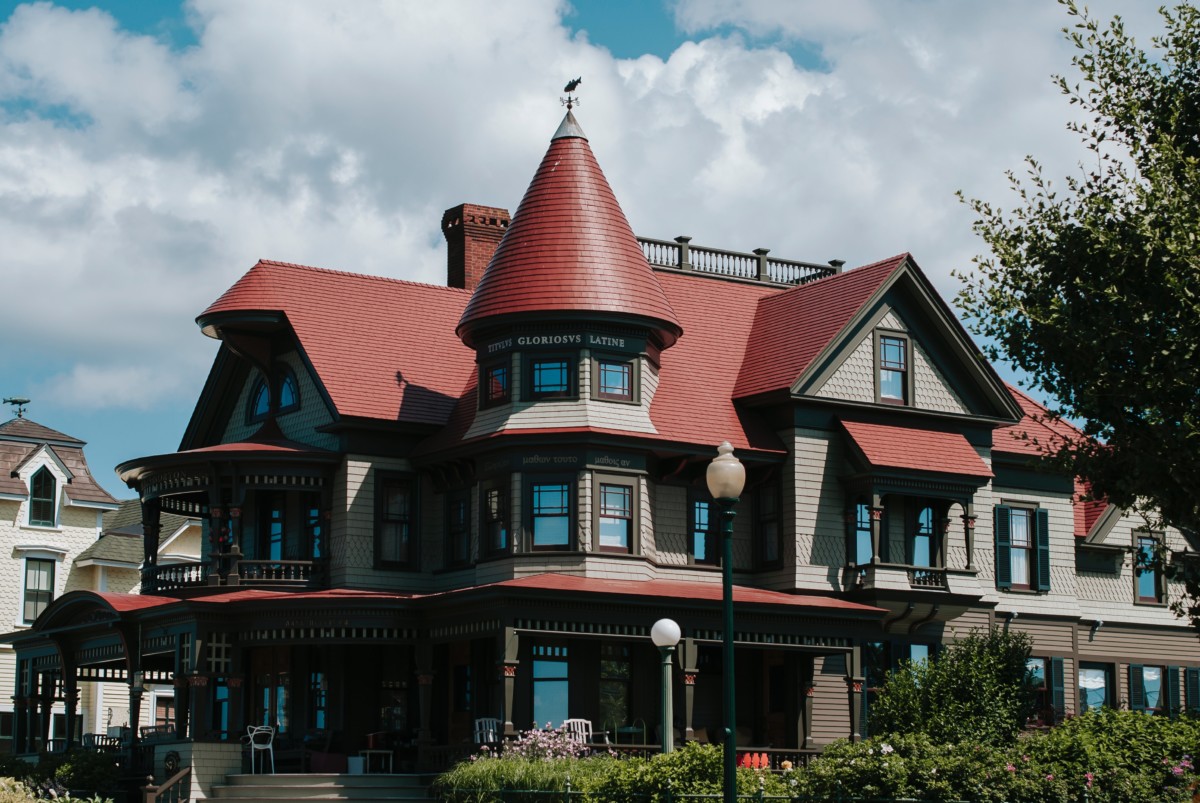
Richardsonian Romanesque Victorian house (1880-1900)
An offshoot of the Romanesque Revival Victorian style home, Richardsonian Romanesque is named after architect Henry Hobson Richardson. Richardson’s take on this home style features an eclectic design with large pillars, rounded arches, a brick façade, and medieval-looking towers.
Pros and cons of Victorian home styles
As with any house you decide to buy, there will undoubtedly be pros and cons. Maybe you’re not a fan of the low ceilings, but the natural lighting throughout the house makes up for it. Before making an offer on a Victorian home, check out some of the pros and cons of this style.
Pros of Victorian style homes
One of the main pros of owning a Victorian home is the charm. From the moment you see a Victorian house, it stands out from the rest with its gingerbread-house-like look and colorful paint. Victorian houses are full of history as most have been around for over a century, so you’ll be living in a home shared by many others before you. Architectural details are present throughout the home’s interior and exterior, so for those searching for a home filled with unique characteristics, a Victorian home may just be the right fit.
Cons of Victorian style homes
The biggest con of owning a Victorian home is the age. As with any historic home, you may encounter issues such as outdated electrical wiring, more frequent repairs, and even asbestos or lead paint found in the home. This can increase the cost of updates you may need to make, depending on the state of the home you purchase. Another con to consider is the size of many of the rooms. While Victorian homes tend to be larger, the bedrooms and closets tend to be smaller, which may be an issue for those looking for storage space.
How to find Victorian houses for sale in your area
If a Victorian house is the right style of home that you’re looking for, Redfin can help you find one in your city.
1. Go to Redfin.com and type into the Search Bar either the city’s name or the zip code, for example, San Francisco, CA where you’d like to begin looking for a house. Press enter.
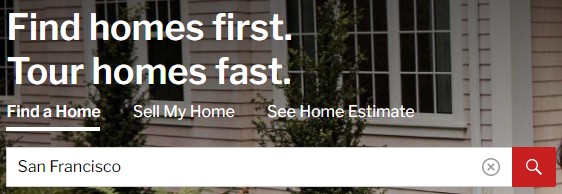
2. Near the top of the next page, on the left side, you will see “More Filters.” Click on that and scroll to the “Keywords” box near the bottom of the page.

3. Type the word “Victorian” into the Keywords box, and press Apply Filters. And that’s it! All Victorian style homes within the city name or zip code you entered will populate the page, and you’ll be able to begin your search.
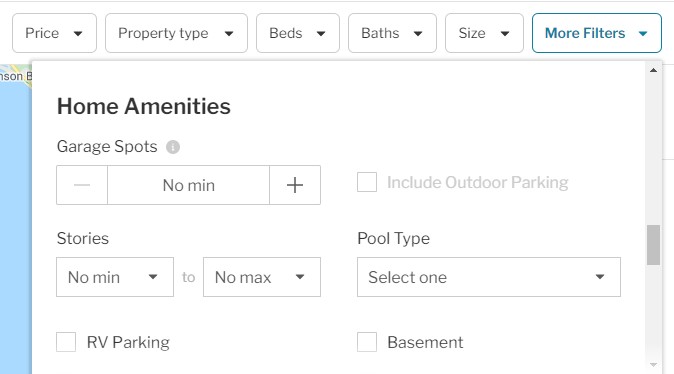
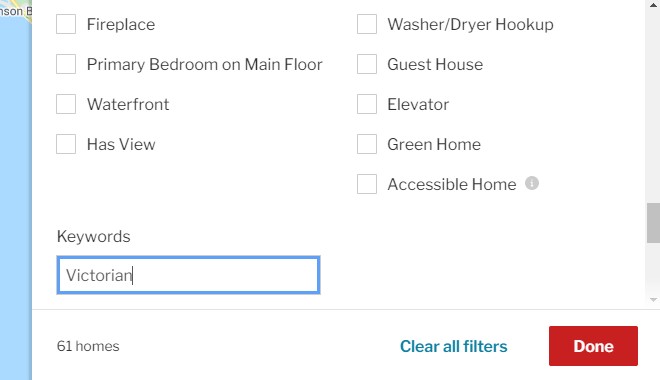
The post Victorian House Styles: An Era of Unique Design appeared first on Redfin | Real Estate Tips for Home Buying, Selling & More.
